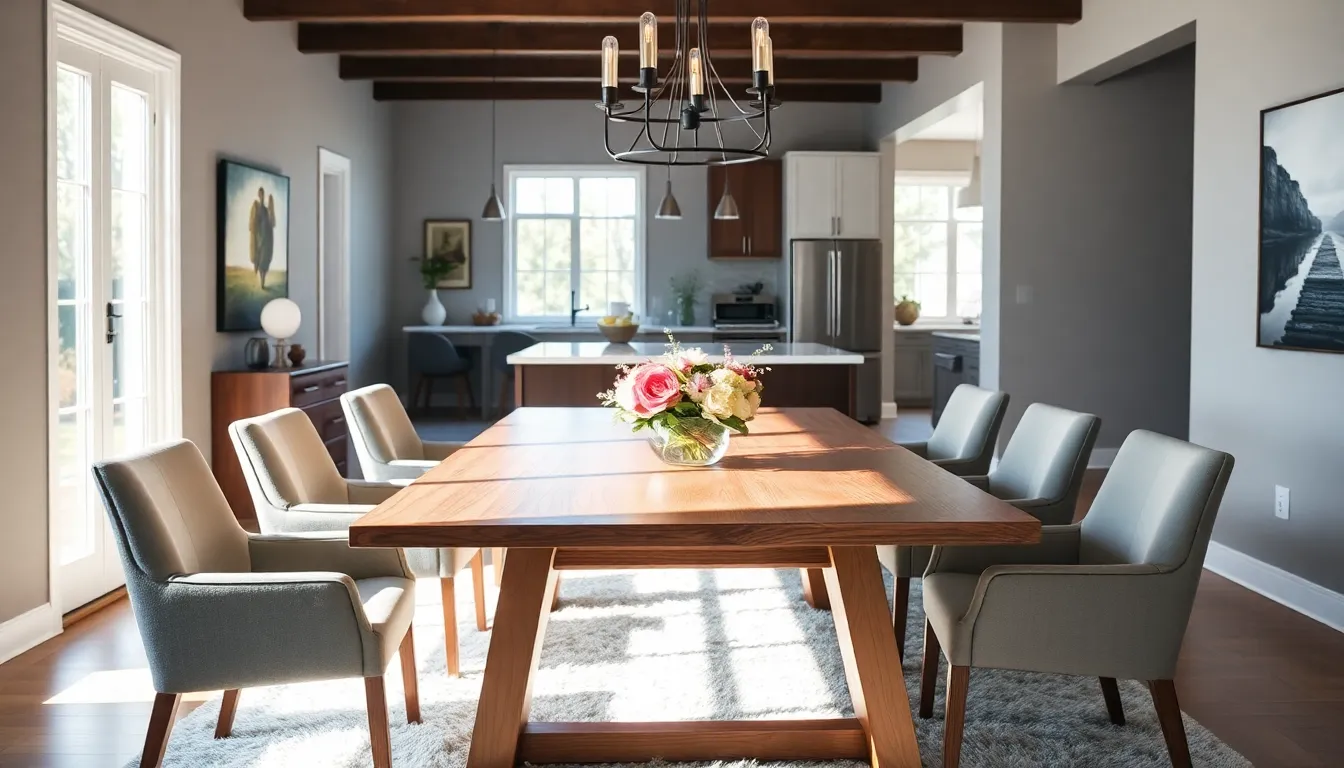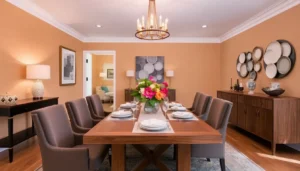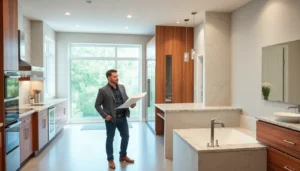Imagine sitting down for dinner in a space that feels warm, inviting, and oh-so-stylish. Dining room interior design isn’t just about where to put the table: it’s the art of crafting an environment that encourages connection and conversation. It’s like choosing the perfect outfit for a fancy dinner – the right elements can turn heads (and tummies rumbling). So, if you’re thinking of giving your dining space a makeover, let’s jump into the essentials that can transform your meals into a feast for the senses.
Table of Contents
ToggleThe Importance of Dining Room Design

When it comes to home design, the dining room often gets sidelined. Yet, this is where memorable moments unfold, birthdays, anniversaries, or those just-because dinners that turn into unforgettable stories. A well-designed dining room acts like a warm hug for friends and family, welcoming everyone to gather around the table.
Not only does good design enhance aesthetics, but it also influences the mood of dining experiences. Thoughtful arrangement encourages relaxation and interaction, making each meal feel special. After all, cooking is an art, but savoring food with loved ones is a masterpiece.
Key Elements of Dining Room Design
Creating a stunning dining room requires consideration of several key elements. Here’s a breakdown to get those creative juices bubbling.
Choosing the Right Color Scheme
Colors set the tone for the entire space. Warm hues like deep reds and oranges can stimulate appetite, while cooler shades promote calmness. Consider how light plays in the room: natural light can make softer pastels pop, while darker colors can feel cozy in the evening. Whether opting for bold accents or neutral foundations, the color palette should resonate with the home’s overall style.
Selecting Furniture and Layout
Furniture choice is crucial: it should not only look good but also suit your lifestyle. A sturdy wooden table might evoke family traditions, while a glass one can provide an airy feel. But here’s the kicker: layout matters too. Ensure there’s enough space for movement, nobody wants to play Twister while trying to serve the mashed potatoes. Thoughtful spacing fosters ease during mealtime, making it comfortable for everyone.
Lighting Considerations for Dining Areas
Let’s talk lighting. Ambient lighting can transform a plain dining room into a chic culinary destination. Chandeliers add elegance, while pendant lights can create a focal point above the table. Dimmable lights allow for adjusting the ambiance, bright for clinking dinnerware and soft for post-meal conversation.
Incorporating Decor and Accessories
Accessories breathe life into the dining room. Think about transforming blank walls with captivating artwork or murals that reflect your personality. Textiles like table runners and cushion covers can bring color and texture into the mix.
Don’t overlook the power of table settings: a well-laid table can elevate everyday meals. Elegant centerpieces, be it fresh flowers, a unique vase, or even seasonal decorations, can draw the eye. Small accents like coasters or decorative bowls may seem minor, yet they add personality and flair to the space.
Styles and Trends in Dining Room Design
Keeping up with the latest trends can be exciting, but timeless styles resonate deeply. Here’s a glimpse into varying styles to consider:
- Modern Minimalism: Characterized by clean lines and uncluttered spaces, modern designs optimize functionality and offer a sleek appearance. Think sculptural furniture and monochromatic palettes.
- Rustic Charm: Blending traditional elements with organic materials creates warmth and familiarity. Think reclaimed wood dining tables paired with soft textiles.
- Eclectic Mix: A mix-and-match approach invites creativity, layering different styles, patterns, and textures for a dynamic vibe.
Tips for Maximizing Small Dining Spaces
Feeling cramped? Small dining spaces can still shine. Here are some practical tips to maximize functionality and aesthetics:
- Use Multipurpose Furniture: Opt for extendable tables or those with storage. This provides flexibility without sacrificing style.
- Think Vertical: High shelving or wall-mounted accessories can free up floor space while showcasing stylish decor.
- Color Tricks: Light colors make rooms feel larger. A fresh coat of paint might just open up the space visually.




